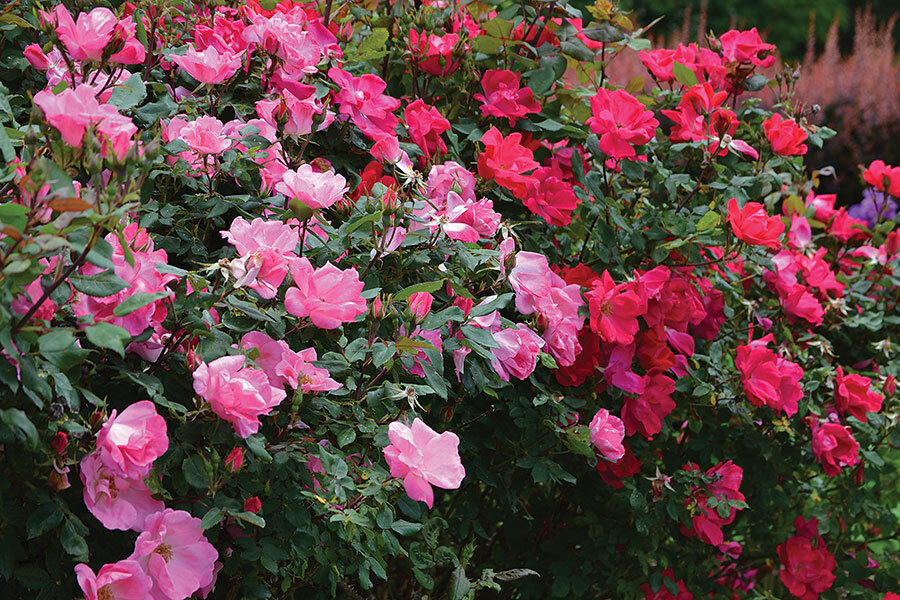Yes, you can grow roses
Loading...
After I give a presentation on the Queen of Flowers, people often approach me to say they can’t grow roses. When we chat about their experiences, I almost always discover they’ve planted an unsuitable or inferior bush. As rose newbies, they don’t realize that some varieties that thrive in California can’t take the heat of the South. Others that do well in Texas may not survive New England winters. And dime-store roses, their canes dipped in wax, will struggle to grow anywhere.
Try again, I say, with virtually mistake-proof shrub roses. Shrubs are easy to care for, will grow well in most areas of the United States, and – most important – don’t need to be coddled.
The “shrub” classification can be confusing, as it lumps many kinds of roses into one category. Traditionally, shrubs were known for their longevity, hardiness, and flower power. Now that modern breeders have added disease resistance to the list of attributes, shrubs are even more desirable.
The legendary French rose hybridizer House of Meilland was one of the first to combine beauty with low maintenance. The firm that gave the world the Peace rose introduced the Bonica shrub rose in 1985. It’s easy to grow and ideal for beginners.
Bonica sports masses of ruffled pink blooms all season long and can spread to five feet in width, making it a great choice for a low hedge. It was the first shrub rose to win the All-America Rose Selection Award.
As Bonica was redefining the shrub rose, Englishman David Austin was creating a “new” old-fashioned rose. His English beauties combine the fragrance and charm of old garden roses grown prior to 1867 with modern vigor and repeat bloom. Deep-crimson Munstead Wood won the fragrance award at last year’s Biltmore International Rose Trials and is continually covered with flowers in my garden.
Other highly rated recent shrub introductions include Lyda Rose, a charming vigorous bush with blooms that resemble apple blossoms. It is disease-resistant and can tolerate some shade.
The 1991 rugosa rose Linda Campbell features brilliant, clear red blooms with as many as 25 blossoms per stem. Growing to a statuesque six feet, it’s a perfect showoff in the garden.
It was the introduction of the Knock Out line of roses that allowed gardeners to use the words “care-free” and “rose” in the same sentence. Virtually impervious to disease, they are truly “plant and forget.” Gardeners who shied away from roses in the past love Knock Outs. But don’t limit yourself to just that variety.
American Rose Society horticultural judge Bill Blevins reminds us not to overlook older species of roses such as Rosa rugosa alba (single white blooms) and rubra (mauve pink with yellow stamens). “They bloom all season,” he says, “even in windy coastal areas, and are almost never troubled by disease. And they’re covered with beautiful red hips [fruits] in the fall.”
Mr. Blevins also recommends a newer shrub rose, Belinda’s Dream (pink), which has received the Earth-Kind designation for disease resistance. Earth-Kind cultivars have gone through rigorous, pesticide-free field trials and promise outstanding performance with minimal care. More than 20 varieties, including the shrub Sea Foam, have earned the designation.
Another favorite is Roseraie de l’Haÿ, introduced in 1901, a vigorous shrub with crimson-purple flowers and disease-resistant, apple-green foliage. It grows to seven feet by seven feet, and the strong perfume of its blossoms draws admirers.
Many of the roses described here can be found at local garden centers and nurseries. Others can be ordered online.
All are good choices for wannabe gardeners or those who want to enjoy the charm of roses without any hassles.







